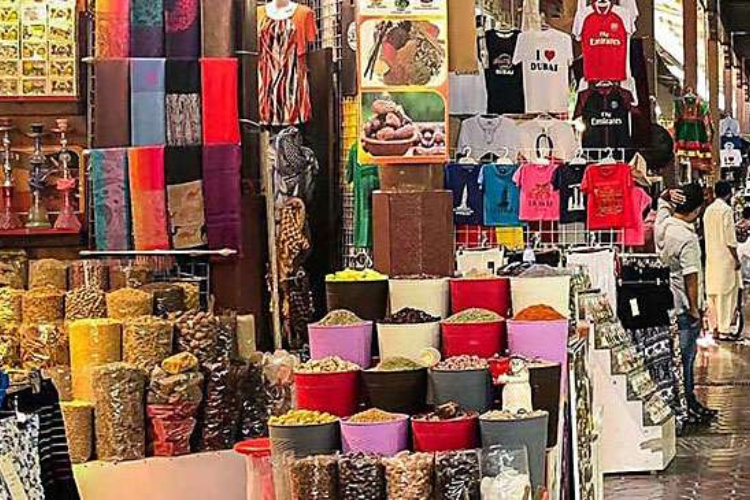Dubai, synonymous with futuristic skyscrapers, luxurious lifestyles, and innovative developments, holds a captivating historical essence beneath its modern veneer. Before it became a global metropolis, Dubai was a modest fishing village and trading port with a rich cultural tapestry. Discovering this hidden gem’s historical roots is a unique experience, best undertaken through walking tours that unveil stories of a bygone era. Exploring Dubai’s historical sites on foot offers an immersive experience that contrasts sharply with the city’s modern image.
These walking tours reveal Dubai’s rich history and culture and provide a deeper appreciation of its change from a modest trading center to a global powerhouse. Whether you’re a history buff, a culture enthusiast, or simply a curious traveller, Dubai’s historical walking tours promise an unforgettable journey through time. Here’s a guide to some of Dubai’s most intriguing historical walking tours that transport you back in time.
1: Al Fahidi Historical Neighborhood
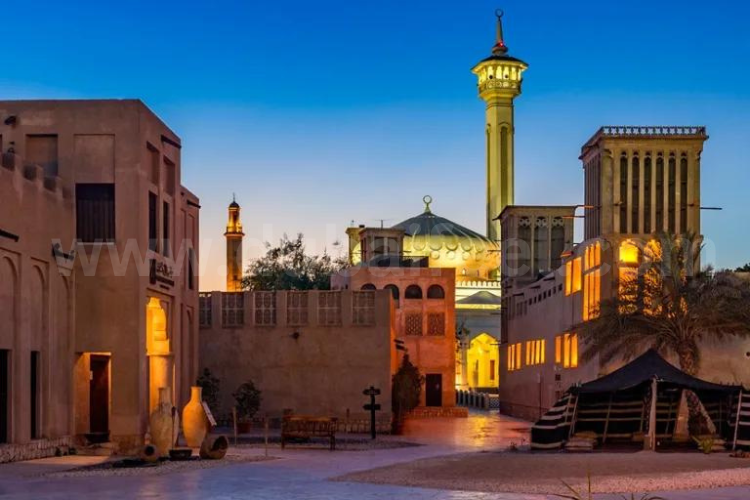
Stepping Back into the 19th Century
Begin your journey at the Al Fahidi Historical Neighborhood, Al Bastakiya. This area dates back to the late 19th Century and is one of the oldest heritage sites in Dubai. As you walk through its narrow lanes, you will get to explore the traditional wind-tower architecture, a distinctive feature of Emirati houses designed to cool interiors before the advent of air conditioning.
Its towering skyscrapers and luxurious lifestyle often overshadow Dubai’s rich history and cultural heritage. However, a deeper exploration through walking tours can uncover the city’s intriguing past, showcasing its journey from a humble fishing village to a global metropolis. Let’s delve further into the specific experiences and sites you can explore during these historical walking tours.
Al Fahidi Historical Neighborhood offers a glimpse into traditional Emirati life in the late 19th Century. Its narrow lanes, wind towers, and conventional courtyard houses characterize the area. Walking through this neighborhood, visitors can appreciate the unique architectural features designed to adapt to the desert environment. The wind towers, or “barrels,” are particularly noteworthy as they demonstrate an early form of air conditioning, capturing cool breezes and directing them into the houses.
Dubai Museum
Housed in the Al Fahidi Fort, the museum offers a fascinating insight into Dubai’s modification from a diving and fishing village to a bustling municipality. Exhibits include artifacts from the desert and marine life, traditional weapons, and displays of local craftsmanship.
Coffee Museum
This charming museum offers a rich history of coffee culture in the Arabian Peninsula. Enjoy a traditional coffee tasting while learning about the different brewing techniques and the significance of coffee in Emirati culture.
Dubai Creek and Al Seef District
Dubai Creek has been the city’s lifeline for centuries, serving as a significant trade route. The Creek is where modern Dubai began, with the Bani Yas tribe establishing the first settlements in the early 19th Century.
Take a traditional abra (wooden boat) ride across the Creek. This mode of transportation has been used for centuries and provides a picturesque view of the old and new parts of the city. Adjacent to Dubai Creek, Al Seef blends old-world charm with modern amenities. With its souks, courtyards, and coral-clad houses, the district reflects Dubai’s traditional architecture and lifestyle. Located at the entrance of Dubai Creek, the Shindagha Historic District is a vital part of the city’s history.
This area was the residence of the ruling Al Maktoum family until the 1950s and is now a cultural hub showcasing the UAE’s rich heritage.
In 1896, this house was the residence of Sheikh Saeed Al Maktoum, the grandfather of the current ruler. Now a museum, it offers a glance into the regal family’s life and the history of Dubai through photographs, documents, and exhibits. Grab a chance to discover the art of traditional perfume-making, an essential aspect of Emirati culture. The museum displays a variety of perfumes, incense, and related artifacts, offering an olfactory journey through time.
2: Deira and the Traditional Souks
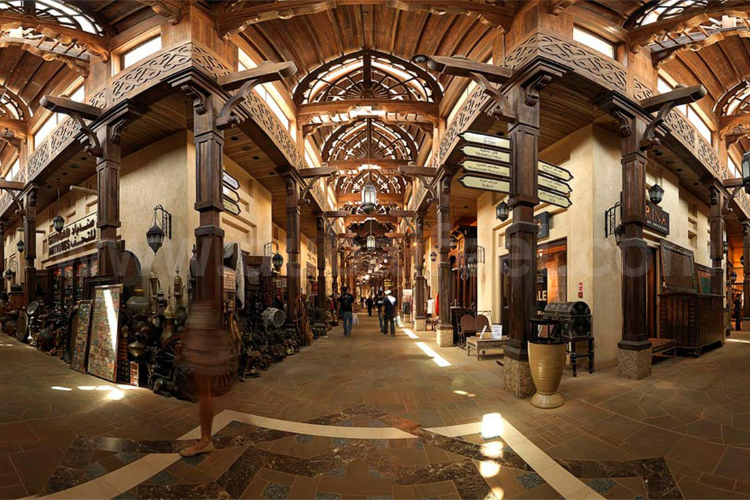
Deira, found on the northern side of Dubai Creek, has been a commercial center since the city’s early days. Walking through Deira, you’ll encounter the bustling souks that have been trading hubs for centuries.
Gold Souk
One of the most famous markets in the world, the Gold Souk, boasts hundreds of shops selling gold, diamonds, and precious stones. The dazzling displays and the intricate designs testify to the region’s wealth and craftsmanship.
Spice Souk
Nearby, the Spice Souk is a sensory delight. Exotic spices, herbs, and the aroma of incense fill the air. Wander through the narrow alleys, where vendors display colorful sacks of spices, dried fruits, and traditional remedies.
This 1890s courtyard house offers a glimpse into the traditional Emirati lifestyle. It showcases a wealthy merchant’s household’s domestic architecture and family life.
Shindagha Historic District
The Shindagha Historic District is undergoing extensive restoration to become a significant cultural destination. Al Shindagha Museum, part of the more extensive Shindagha Heritage District, is an expansive complex that offers a comprehensive look at Dubai’s history and culture. This museum comprises multiple pavilions, each dedicated to Emirati life and history.
The Sheikh Saeed Al Maktoum House is just one of many historical buildings in this area. The district also includes the Saruq Al Hadid Archaeology Museum, which displays artifacts from an ancient Iron Age site discovered in the desert, showcasing Dubai’s long history as a center of trade and civilization. The district’s transformation into a cultural hub includes reviving traditional crafts and trades. Visitors can watch artisans at work, creating pottery, weaving textiles, and crafting traditional jewelry. These live demonstrations offer a deeper appreciation of the mastery and methods passed down through generations.
3: Jumeirah Archaeological Site
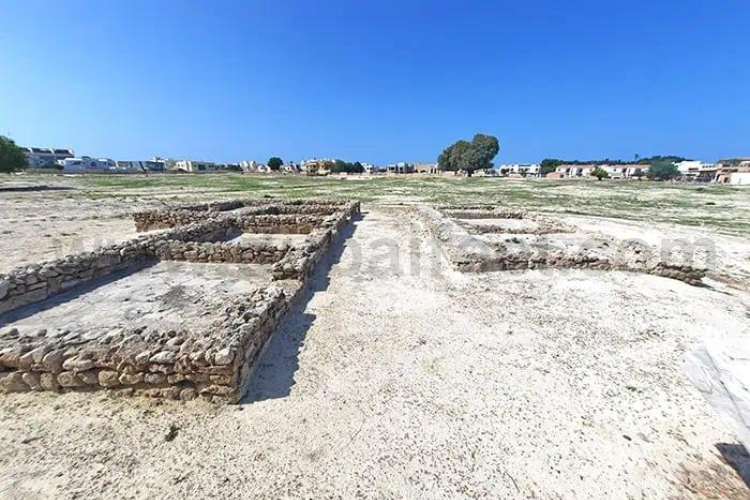
The Jumeirah Archaeological Site, dating to the 6th Century, provides evidence of Dubai’s ancient history. This site reveals the existence of a thriving community long before the city’s modern development. Ongoing archaeological excavations have unearthed antiques, including pottery, tools, and coins, indicating a prosperous settlement in trade and daily life. The center provides informative displays about the site’s history and significance, offering a deeper understanding of the early inhabitants of Dubai.
Al Marmoom Desert Conservation Reserve
While not a conventional walking tour, visiting the Al Marmoom Desert Conservation Reserve offers a unique perspective on the historical significance of Dubai’s desert environment.
Bedouin Culture
Learn about the nomadic Bedouin tribes that roamed the desert for centuries. Encounter traditional activities such as camel riding, falconry, and henna painting to gain insight into their way of life.
Archaeological Findings
Discover ancient petroglyphs and remnants of early settlements, highlighting the desert’s historical importance as a home and trade route for early inhabitants.
Practical Tips for Historical Walking Tours
- Given the walking involved, wearing comfortable shoes is essential.
- Dubai’s climate can be harsh, especially in summer. To avoid the heat, early morning or late afternoon tours are recommended.
- To enhance your experience, you can opt for a guided tour. These tours provide expert insights and stories that bring history to life.
- Dress modestly, especially when visiting cultural and religious sites.
- Remember your camera. The historical sites offer stunning photography opportunities, from architectural details to vibrant market scenes.
- Complement your tour with a taste of traditional Emirati cuisine at local eateries. Dishes like matchbooks, maqamat, and Arabic coffee provide a culinary journey into the past.
- Visit regional markets and stores for unique souvenirs such as spices, textiles, and traditional crafts that reflect Dubai’s heritage.
4: Ras Al Khor Wildlife Sanctuary
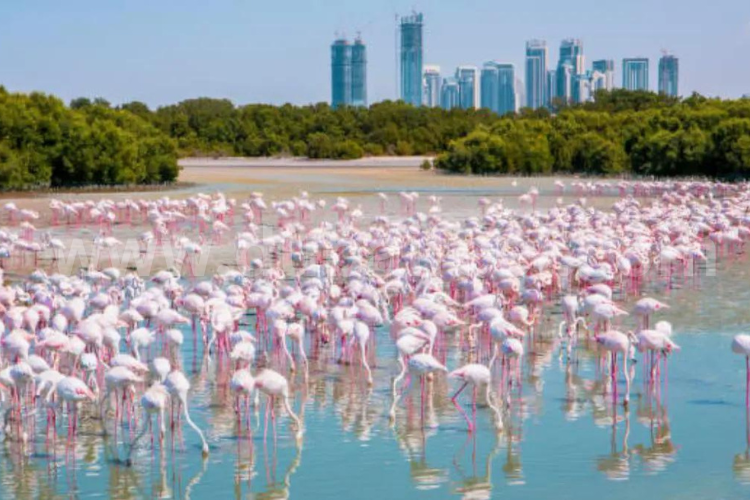
While primarily known for its wildlife, particularly flamingos, Ras Al Khor Wildlife Sanctuary also has historical significance. The sanctuary’s name translates to “Cape of the Creek,” highlighting its connection to Dubai Creek’s history as a vital lifeline for the city.
Bird Watching Hides
Explore the various hides strategically placed around the sanctuary, which offer excellent views of the flamingos and other bird species. Interpretative panels provide information about the area’s ecological importance and historical use.
Nature Trails
Walking the sanctuary’s trails offers a chance to appreciate its natural beauty and understand the local population’s historical reliance on these wetlands for fishing and pearling.
Dubai Frame
While the Dubai Frame is a modern landmark, its design and exhibitions offer a unique perspective on the city’s history. The structure frames views of both old and new Dubai, symbolizing the connection between the past and the future.
Old Dubai Gallery
Before taking the elevator to the top, visitors walk through a multimedia exhibition that showcases Dubai’s history, from its early days as a fishing village to the discovery of oil and subsequent rapid development.
Sky Deck
Enjoy panoramic city views from the top. One side offers vistas of modern skyscrapers, and the other shows the historical districts. This visual contrast powerfully represents Dubai’s transformation.
Dubai’s historical walking tours offer a captivating journey through the layers of its past, revealing stories of resilience, innovation, and cultural diversity. Beyond the well-known sites, exploring lesser-known historical gems furnishes a more profound and nuanced understanding of the city’s heritage. Whether you are wandering through the restored villages of Hatta, exploring the archaeological treasures of Saruq Al Hadid, or experiencing the living culture at the SMCCU, each step unveils a different facet of Dubai’s rich and multifaceted history. These tours enrich your knowledge and deepen your appreciation for the city’s unique blend of tradition and modernity.
Modern Walking Tours
Also read :Dubai Day Trips: 7 Unmissable Gems and Surprising Letdowns
5: Downtown Dubai and Burj Khalifa
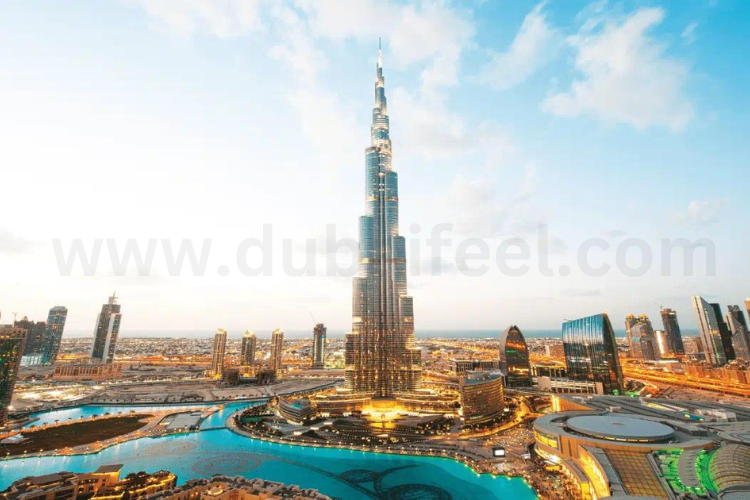
The Pinnacle of Modernity
Downtown Dubai is the epitome of modern urban development. It is home to some of the metropolis’s most splendid landmarks, including the Burj Khalifa, the tallest building in the world.
Key Highlights
Burj Khalifa: Start your tour with a visit to the observation terraces of the Burj Khalifa. The scenic views of the city and beyond are breathtaking. Through interactive exhibits, learn about the engineering marvel behind this architectural icon.
Dubai Mall: Adjacent to the Burj Khalifa, Dubai Mall is one of the numerous extensive shopping malls worldwide. In addition to shopping, it offers countless attractions, such as the Dubai Aquarium, Underwater Zoo, and VR Park.
Dubai Fountain:
The Dubai Fountain performs daily shows set to music and lights. The spectacular water dances are a must-see, especially in the evening.
City Walk
Urban Sophistication
City Walk is a contemporary outdoor retail complex that combines shopping, dining, entertainment, and art and design. Key Highlights
Street Art: The area is adorned with impressive street art and murals by renowned international artists, making it an open-air gallery. Luxury Shopping and Dining: Stroll through the pedestrian-friendly avenues lined with high-end boutiques and gourmet restaurants. The variety of international cuisines available offers a culinary tour of its own.
Entertainment: City Walk hosts various events and activities, from live performances to art exhibitions,ensuring something interesting always happens. Dubai Marina and Jumeirah Beach Residence (JBR)
Coastal Modernity
Dubai Marina and JBR represent the pinnacle of modern waterfront living, with towering skyscrapers and a vibrant promenade.
Marina Walk: A seven-kilometer-long promenade along the waterfront, offering stunning views of the marina filled with luxury yachts. The walk has cafes, restaurants, and shops. The Beach at JBR: This beachside development offers a relaxed atmosphere with various dining options, beach activities, and a cinema.
Ain Dubai: Located on Bluewaters Island near JBR, Ain Dubai is the world’s giant observation wheel. Walking across the pedestrian bridge to Bluewaters Island offers breathtaking skyline and Arabian Gulf views.
6: Dubai Design District (d3)

Innovation and Creativity
Dubai Design District, known as d3, is a hub for the city’s creative community. It showcases contemporary art, fashion, and design.
Key Highlights
Galleries and Studios: Explore numerous art galleries and design studios that feature works by local and international artists and designers. The district is a vibrant space where creativity flourishes.
Design Events: d3 hosts various design and fashion events throughout the year, including Dubai Design Week. These events attract talent worldwide and offer workshops, exhibitions, and panel discussions.
Culinary Delights: The district boasts a range of trendy cafes and restaurants, making it ideal for relaxing and enjoying the innovative atmosphere.
Practical Tips for Walking Tours in Dubai
Planning Your Tour
Weather Considerations: Dubai’s climate can be harsh, especially in summer. Early morning or late afternoon tours are recommended to avoid the heat.
Guided Tours: A guided tour can enhance your experience, providing expert insights and stories that bring history and architecture to life.
Respect Local Customs: Dress modestly, especially when visiting cultural and religious sites.
Enriching Your Experience
Photography: Remember your camera. Both historical and modern sites offer stunning photography opportunities, from architectural details to vibrant market scenes.
Local Cuisine: Complement your tour with a taste of traditional Emirati cuisine at local eateries. Dishes like matchbooks, maqamat, and Arabic coffee provide a culinary journey into the past.
Souvenirs: Visit local markets and shops for unique souvenirs such as spices, textiles, and traditional crafts that reflect Dubai’s heritage.
Dubai’s walking tours offer a fascinating journey through time, blending historical charm with modern marvels. From the ancient lanes of Al Fahidi to the towering heights of the Burj Khalifa, each step reveals a different aspect of the city’s rich and diverse character. Whether you are a history enthusiast, a culture fan, or a curious traveler, exploring Dubai on foot promises an enriching and unforgettable adventure.
7: Global Village
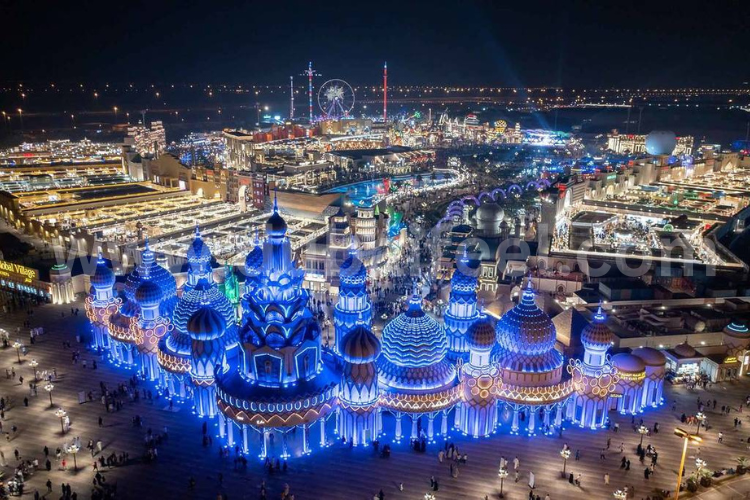
A Cultural Extravaganza
Global Village is a seasonal cultural festival from October to April, offering visitors a unique opportunity to experience the cultures of over 90 countries in one place. The sprawling complex is into pavilions representing different countries, each showcasing unique crafts, cuisine, and entertainment.
Country Pavilions
Each pavilion reflects the architecture and cultural essence of the country it represents. Walk through the streets of India, Egypt, China, and many more, experiencing each nation’s sights, sounds, and flavors.
Shopping
Global Village is a shopper’s paradise, with many traditional products and handicrafts worldwide. From Persian rugs to African wood carvings and Indian spices, the variety is endless.
Cultural Performances
Enjoy live performances featuring traditional dances, music, and theatrical shows from different countries. These performances provide an immersive cultural experience, celebrating the diversity and talent of each nation.
Food Stalls
The culinary offerings at Global Village are as diverse as its cultural displays. Savor authentic dishes from around the globe, from Turkish kebabs and Thai noodles to Italian gelato and Emirati sweets.
Alserkal Avenue
A Hub of Contemporary Art
Located in the Al Quoz industrial area, Alserkal Avenue is Dubai’s premier arts district. The avenue is home to a vibrant community of contemporary art galleries, creative spaces, and cultural events.
Art Galleries
Explore the numerous galleries showcasing contemporary art from local and international artists. Highlights include the Leila Heller Gallery, Carbon 12, and the Third Line, each offering unique exhibitions and installations.
Workshops and Events
Alserkal Avenue regularly hosts workshops, talks, and cultural events. Participate in a pottery class, attend a film screening, or join a panel discussion on contemporary art and culture.
Creative Spaces
The district also houses creative workspaces and studios where artists and designers create and collaborate. Visiting these spaces provides insight into Dubai’s creative process and thriving arts community.
Dining
Alserkal Avenue features several chic cafes and eateries where you can relish a meal or coffee. These venues often incorporate artistic elements, adding to the creative ambiance.
